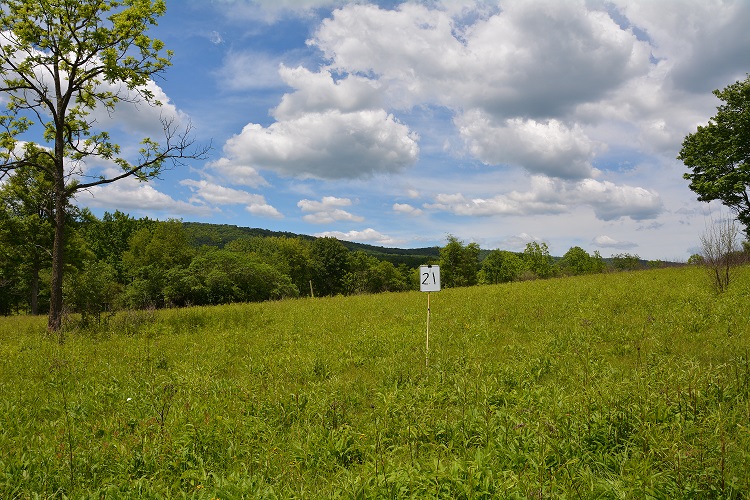
Sitting atop the Kittatinny Ridge, tucked away in Lebanon and Dauphin Counties, is the Fort Indiantown Gap National Guard Training Center (FTIG). This installation is an essential part of the Kittatinny Ridge for military and conservation purposes. On a yearly basis, FTIG often trains the highest number of soldiers in the country on one of the smallest National Guard installations; personnel steward the property with care to protect rare, threatened, and endangered species, including the Regal Fritillary butterfly; and protecting land against encroachment is a top priority. FTIG is one of the Kittatinny Conservation Landscape’s (KRCL) primary partners.
FTIG is the headquarters of the Pennsylvania National Guard’s second busiest Army helicopter aviation training facility in the country behind only Fort Rucker. It is a world-class installation that trains 100,000 active duty and reserve unit troops. Home to the Eastern Army Aviation Training Site and the 28th Expeditionary Combat Aviation Brigade (part of the distinguished 28th Infantry Division), FTIG provides virtual simulations and hands-on experience in a multitude of training areas, aircraft qualifications, and instructional training on utility and cargo helicopters to aviators. Pilots average over 9,000 flight hours annually, making it one of the Army’s busiest heliports. FTIG also provides ground training support ranging from individual warrior tasks to brigade level collective training exercises. The installation hosts multiple military equipment maintenance facilities, artillery exercises, and a live-fire air-to-ground training range.

A surprise to many, a symbiotic relationship exists between these intensive training activities on the grounds and the survival of a rare butterfly, the Regal Fritillary, described as a “monarch dipped in chocolate.” FTIG has the largest population of the grassland butterfly in the eastern U.S. The eastern regal fritillary butterfly (Argynnis idalia idalia) was once common in the Northeast but declined over the last 75 years, primarily due to grassland destruction/alteration. Survival at FTIG is dependent on military training disturbances that maintain early successional plant communities and support vegetation essential to its future existence. These elements include violets for larvae, nectar sources for adults, and warm season bunch grasses for protection and cover. Due to the rare status (ESA Candidate II), the PA National Guard agreed in 1998 to prohibit training on 219 acres of prime training lands to research the habitat requirements of this butterfly and to stave off increased regulations or ESA formal listing. A repatriation (return of a native species to its former range) project was proposed to aid in species recovery and to reduce training encroachment at FTIG. For more information on the regal fritillary butterfly please see FTIG’s fact sheet.

Aside from contributing to the stewardship of Pennsylvania’s wildlife, there are other conservation-oriented reasons for the KRCL to work closely with FTIG personnel. Maintaining a forested, undeveloped Kittatinny Ridge landscape is the primary goal for the KRCL and crucial for military operations.
One way that FTIG protects the integrity of its military operations is by conserving land that surrounds the facility. In 2013, FTIG became a participant in the federally funded Army Compatible Use Buffer Program (ACUB), which the U.S. Army initiated to address growing concerns regarding development and encroachment around the perimeter of military installations. Establishing buffer areas around a military installation limits the effects of encroachment on military training and maximizes the amount of available training land inside the installation boundary that can be used to support the installation’s mission. These buffer areas also contribute benefits to local recreational, agricultural, forest management, and greenspace uses, of particular interest to the KRCL and communities. ACUB is part of the Army’s effort to limit encroachment and maintain a balance among military training requirements, community desires, and environmental protection.
Pooling resources to help protect FTIG has many benefits to the National Guard and the Kittatinny Ridge community.
- Greater training flexibility and fewer restrictions to aviation training and live-fire exercises, which minimizes noise complaints.
- Ability to use large and small-caliber ranges and demolitions facilities.
- Access to financial support for land protection, including important wildlife habitat.
- Conservation of high-quality local surface waters, wetlands, the Susquehanna River, and the Chesapeake Bay watershed.
- Conservation of a Global Important Bird area and premier raptor migration corridor in the northeastern United States.
- Stewardship of high-quality habitat for multiple rare, threatened, and endangered species and assistance with Regal Fritillary repatriation.
- Protection of recreational assets for the community including the Appalachian National Scenic trail and its viewshed and numerous hiking, fishing, boating, and hunting areas.
- Opportunity for landowners to conserve their land, retaining ownership and contributing to the future legacy of the Kittatinny Ridge.